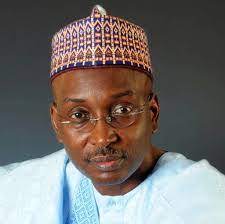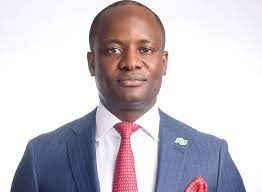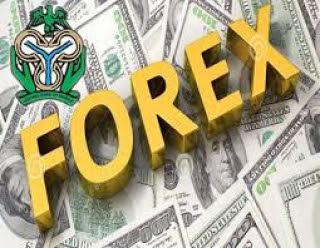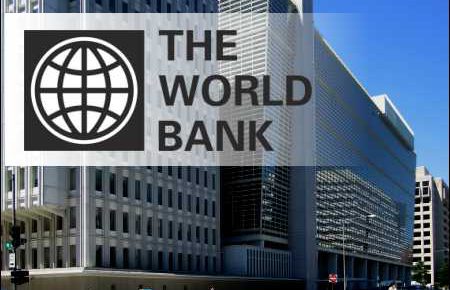The Director-General of the Progressives Governors Forum (PGF), Alhaji Salihu Lukman, has appealed to the Federal Government to do more public enlightenment on the rising public debt stock, particularly on latest moves to borrow more from external creditors to fund the 2021 budget deficit.
Lukman, who made the appeal in a statement on Wednesday, also urged the Central Bank of Nigeria (CBN) to urgently explore more monetary policy options to stabilize the Naira exchange rate.
According to him, apart from the anxieties over the rising public debt stock in recent times, the other challenge, which is very disturbing, is the issue around management of Nigeria’s foreign exchange by the apex bank.
The DG pointed out that had the Naira-to-US Dollar exchange rate been stable in the last two years, most of the alleged debates about so-called recklessness against the President Muhammadu Buhari-led government would have been long abated.
While defending the decision of President Muhammadu Buhari’s government to borrow more money, stated that Nigeria’s debt rate was sustainable due to the country’s debt-to-revenue ratio.
The DG further clarified: “So far, the debate about Nigeria’s debt is based on the absolute value of the amount Nigeria owes. Variables of both GDP and revenue are ignored in the debate.
“During the administration of former President Olusegun Obasanjo (1999 – 2007), external debt was reduced to $2.11 billion at the end of 2007. However, the domestic component increased from N798 billion to N2.17 trillion within the same period.
Citing the Debt Management Office (DMO) debt stock data to support his views, Lukman stated that “the breakdown of Nigeria’s debt stock shows that $20.5 billion (about 73%) was owed to Paris Club. By 2004, the external debt stock had risen to $35.94 billion. The negotiation eventually paid off in 2005, when Paris Club granted relief of $18 billion.
“By the end of 2006, the Obasanjo administration had cleared off the Paris Club’s debt. However, the country still owed $2.11 billion external debt and domestic debt was or N2.17 trillion.
“Under late President Umaru Musa Yar’adua (2007 – 2011), Nigeria’s external debt increased from $2.11 billion to $3.5 billion and domestic debt rose to N5.62 trillion.
“Similarly, between 2010 – 2015, during the tenure of former President Goodluck Jonathan, Nigeria’s foreign debt rose to $7.3 billion and domestic debt was N7.9 trillion. By June 2021, under President Buhari’s administration, Nigeria’s external debt has risen to $28.57 billion and domestic debt was N16.02 trillion
“Computed at current basic prices, under former President Obasanjo, between 1999 and 2007, Nigeria’s GDP increased from N5,426.47 billion to N34,318.67.
“By 2010, under late President Yar’Adua, Nigeria’s GDP increased to N62,989.40 billion. In 2015, under former President Goodluck Jonathan, Nigeria’s GDP increased to N94,144.96 billion. At the end of 2020, under the current administration of President Buhari, Nigeria’s GDP has increased to N152,324.07.
“Just looking at both the debt profiles of respective governments since 1999 as well as GDP values, debt/GDP ratio has decreased from about 22% in 1999 to about 12% at the end of former President Jonathan’s administration.
“By the end of 2020, under President Buhari, debt-to-GDP ratio had gone up to around 21%, but still less than the 22% in 1999”, the DG added.
According to him, low debt-to-GDP ratio indicates that the economy produces and sells goods sufficient to pay back the debt.
Lukman further stated, however, the point should be emphasized that although some literature suggests that debt-to-GDP ratio of below 60% is sustainable, the issue of assessment of performance of government’s revenue in relation to debt provides a better measure of sustainability.
He maintained that in other words, what is the size of debt in relation to revenue, which is the point made by Richard Salsman to the effect that ‘public debt/GDP metric is better than none but the public debt/revenue ratio better measures fiscal sustainability.
The DG further stated that “Nigeria’s total revenue in 1999 was N949.2 billion and that by 2007, under late President Yar’Adua, it rose to N5,727.5 billion, in 2010, N7,303.7 billion, and in 2015, under former President Goodluck, it peaked at N6,912.5 billion and in 2020 under President Buhari the revenue figures rose N9,303.2 billion.
He pointed out that this meant that debt-to-revenue ratio was 3.6% in 2007, 1.3% in 2010, 1.75% in 2015 and in 2020, 1.75%.




